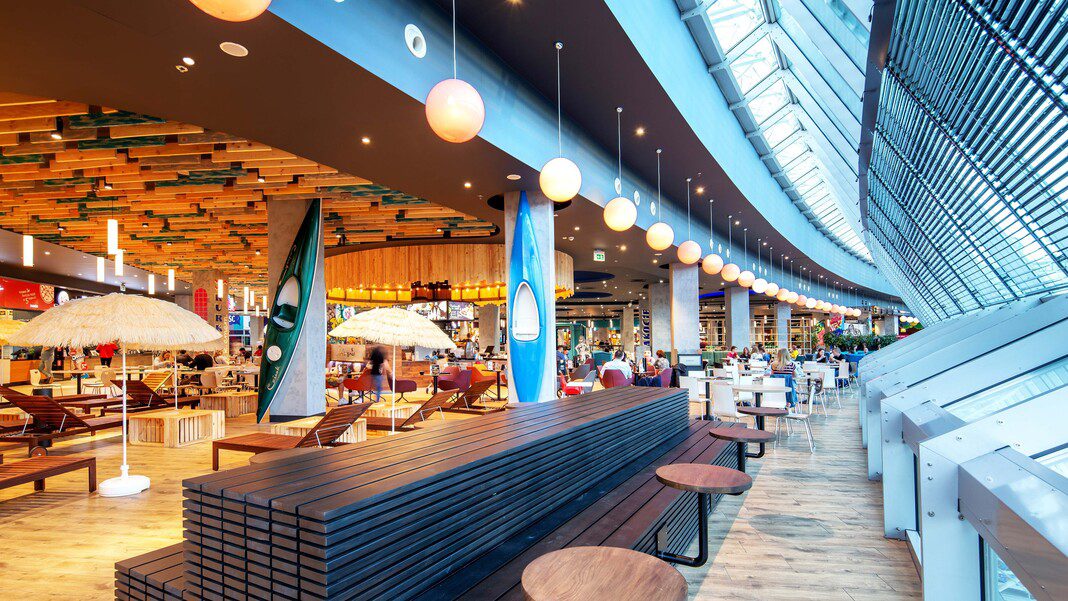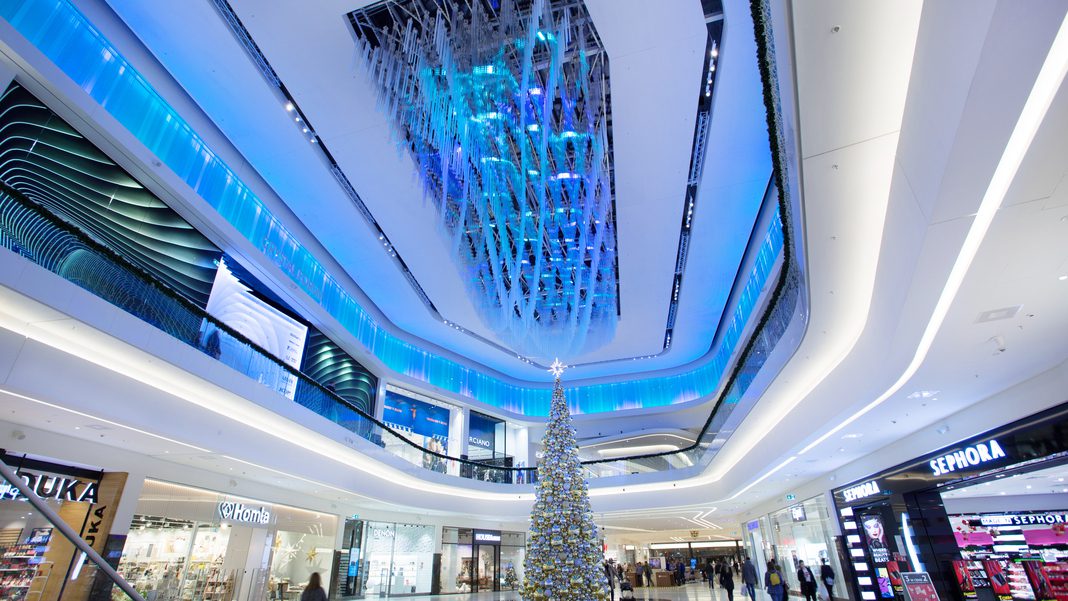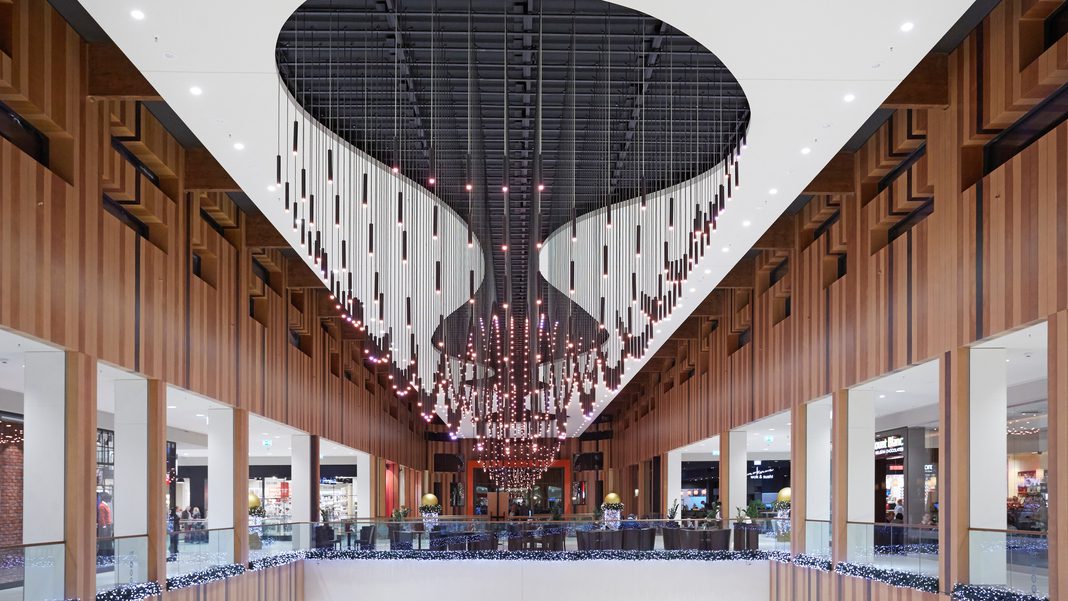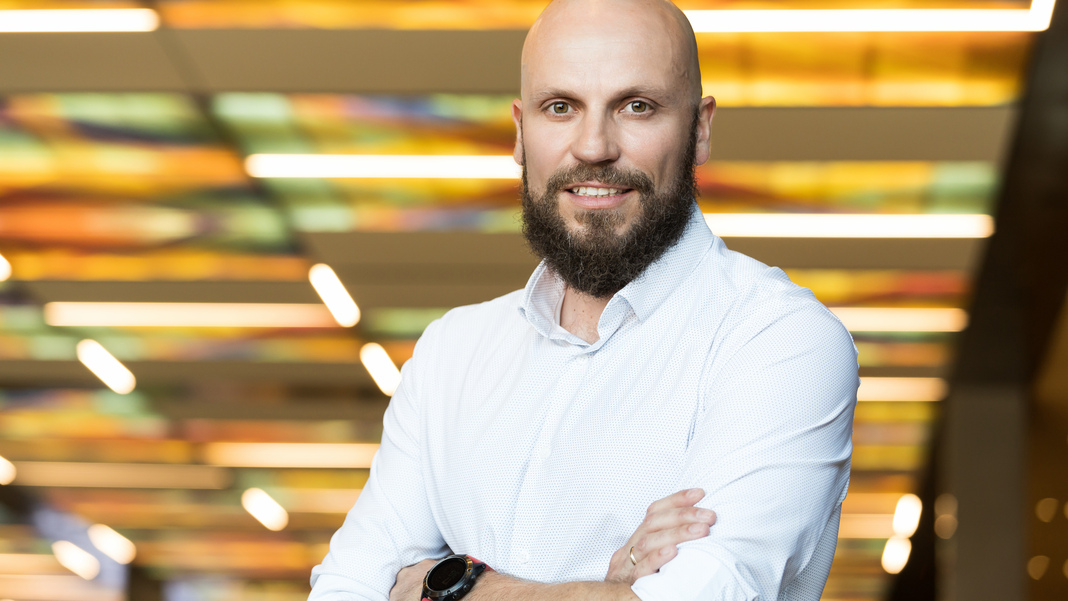A good example is the Galeria Libero in Katowice. A luminous edifice is an element recognizable from a distance and kind of a beacon that attracts attention and directs us in a certain direction – he said in an interview with Retailnet Jacob Gwinichak , Lighting Designer, Architectural Director, Signify Poland.
In the past, I would start a conversation about the lighting architecture of a shopping center with a question of whether or not light is sold, but today, when showrooms play so many roles, one should perhaps ask how lighting can affect the perception of a shopping center?
This is a very broad issue and I think it is useful to divide this area into several major components that are important to the functioning of the entire shopping center. However, it is undeniable that lighting is an element that greatly influences how we – the customers, but also the property owner – perceive and feel this space, and finally whether and how we buy it. Lighting is able to grab our attention and anchor the thing in a particular part of the city. Lighting can also affect the recognition of the object, make it easier to notice and attract the attention of residents, as well as people who are only guests in a particular city. Such an effect can be achieved, for example, using a light tower. Galeria Libero in Katowice is a good example. An illuminated edifice is an element recognizable from a distance and is a kind of beacon that attracts attention and directs us in a certain direction. Light makes us identify with a particular space, and we find it easier to find ourselves in that place, especially in the evening, and we can “read” that space more efficiently. At night, when we have city lights, this element of lighting, sometimes dynamic, sometimes static, allows us to easily recognize where we want to go and what it is. The Galleria Katowica tower is a distinctive feature, an element recognizable from a distance. It would not be possible to achieve this without light, even if we had a great figure and a body perfectly embedded, and it would not have the point that attracts our attention, our eyesight.
When designing public utility buildings, experts always emphasize that they must be somehow included in the city, in the city fabric. It’s no different than shopping malls – they cannot be an isolated entity. Here too the light comes to the rescue…
Yes, of course. Galleries must integrate with the urban fabric, and speaking of lighting design, we cannot leave architecture alone. You have to look at the items near the shopping center. We are talking, for example, about the square in front of the facility, the roads, or a part of the park that, after all, is an integral part of both the city and this gallery. This area should be more attractive than the city, this can be achieved, for example, by lighting the benches in the garden around the gallery or by illuminating the green spaces around the gallery with light. In addition, we have to combine it with the city lighting that we found. We were able to organize it well in the Posnania fair, where we found two main elements, ie a large square and walkways leading to the facility – pedestrian and bike paths. Here the light somehow leads to the gallery. Illuminated walkways are designed to guide you safely to your destination. It is highlighted, among others, by the so-called landscaping, greenery, benches and a fountain. Guests feel comfortable and safe here.
Let’s move on to the interiors of the shopping center. Here we have many integrated places, such as dining halls, premium areas, but also common areas. How does light help separate individual surfaces and give them meaning?
Recently, a trend has been observed in the design of special areas in shopping centers – for example, for premium brands. We can see such areas in the Galeria Mokotów shopping center in Warsaw, but also in Posnania and many other shopping centers. Often these are separate areas where premium brands are located. This area should stand out a bit from the rest of the exhibition. Of course we can distinguish it from architecture, but we can also play with light in a fun way, so that the client suddenly feels that he is in a slightly different place. This effect can be achieved by adding specific elements to lighting fixtures, such as large chandeliers, or small lighting elements that twinkle like crystals, which affect our minds and indicate that even though we are in the same place, we perceive it as something attractive and exciting. Benefit.
Likewise, we can play with light in the dining hall areas. Here it is very important to combine functional lighting with lighting that will create an atmosphere of intimacy. It is a difficult task, because dining halls are usually large areas in which it is difficult to develop the right lighting conditions that would provide comfort to the customers. Therefore the task of the lighting engineer is mainly to control the lighting conditions during the day, night and evening. After all, the fair operates completely differently at different stages of the day. What would be convenient for a mother with children who would like to use the dining hall during the day will not necessarily be convenient when evening comes and a completely different client appears in the restaurant areas.
So, does he sell light?
Yes, of course. Sells in many respects. why? Just because it attracts attention, a person reacts to this lighting stimulus in an intuitive way. Even a slight change in the amount, intensity, or tone of light in a particular place causes our attention to be drawn. You can refer to shop window lighting from here. Research has confirmed that a display with a dynamic lighting accent causes pedestrians to enter the store more than it originally did when the location was less expressive. What’s more, respondents noticed the store only after highlighting the window, despite having gone through it for many years. This is the first aspect of selling, ie interest. Another is the atmosphere and comfort that light can create. Adequate lighting, the quality of that light makes us feel good in a certain place, our skin looks good, and our mind tells us that it is a friendly place for us. Going forward, let’s take a look at what the right lighting can do in fitting rooms – we have solutions that directly help you sell. The moment we set the right amount of light and the right color temperature for that light, as customers we can check how we feel in a particular costume under certain conditions. In addition, the fitting room has the ability to create virtual conditions, that is, simulating the look of a particular element, for example at home or in a restaurant in the evening. Light really influences these buying decisions and gives a lot of subconscious impulses to our brains, which actually decide that if we feel good about something, we also have a greater desire to buy. We are more open.
Announcer: Katarzina Abouz
denotes awareness:




“Music specialist. Pop culture trailblazer. Problem solver. Internet advocate.”







